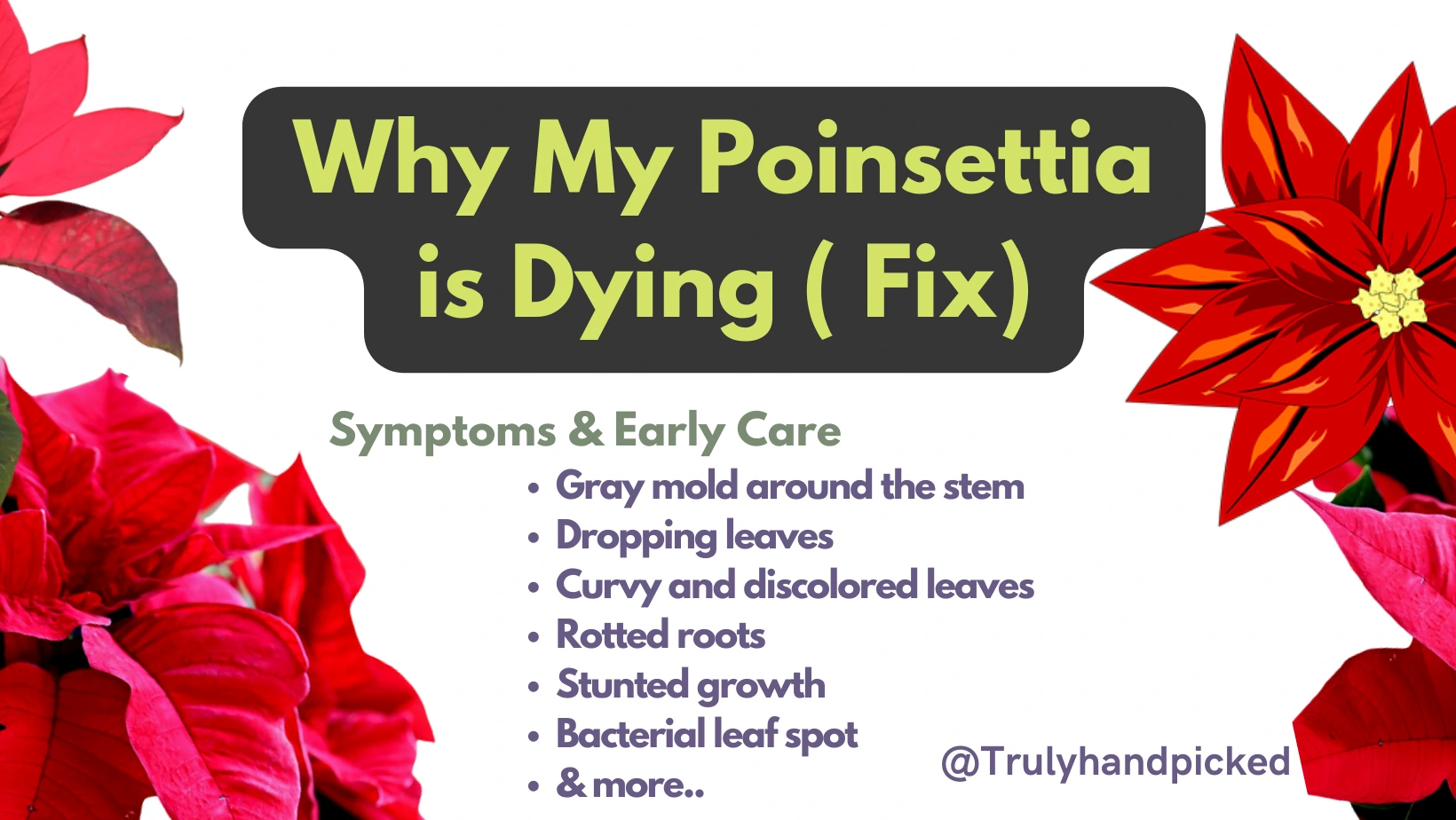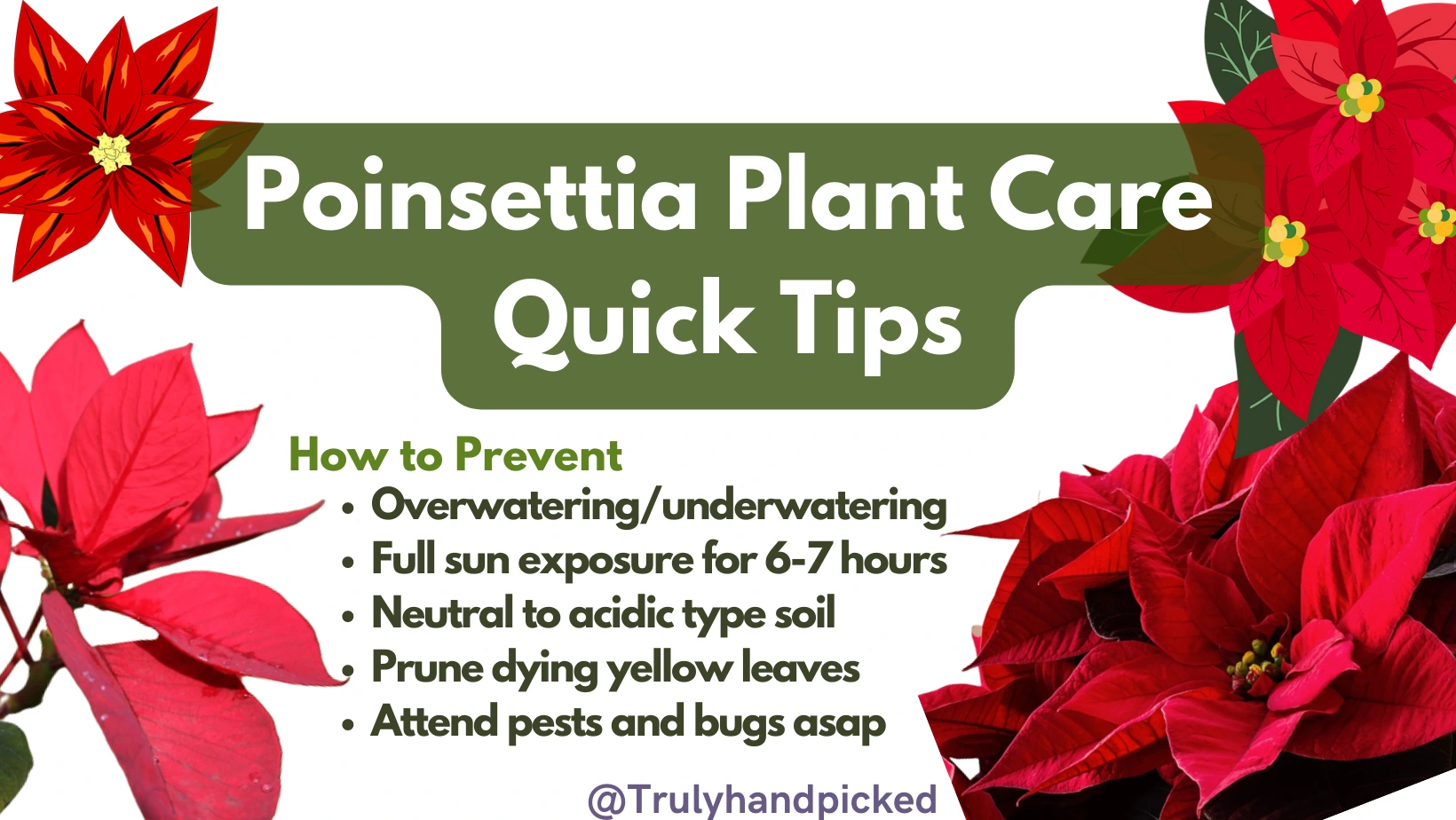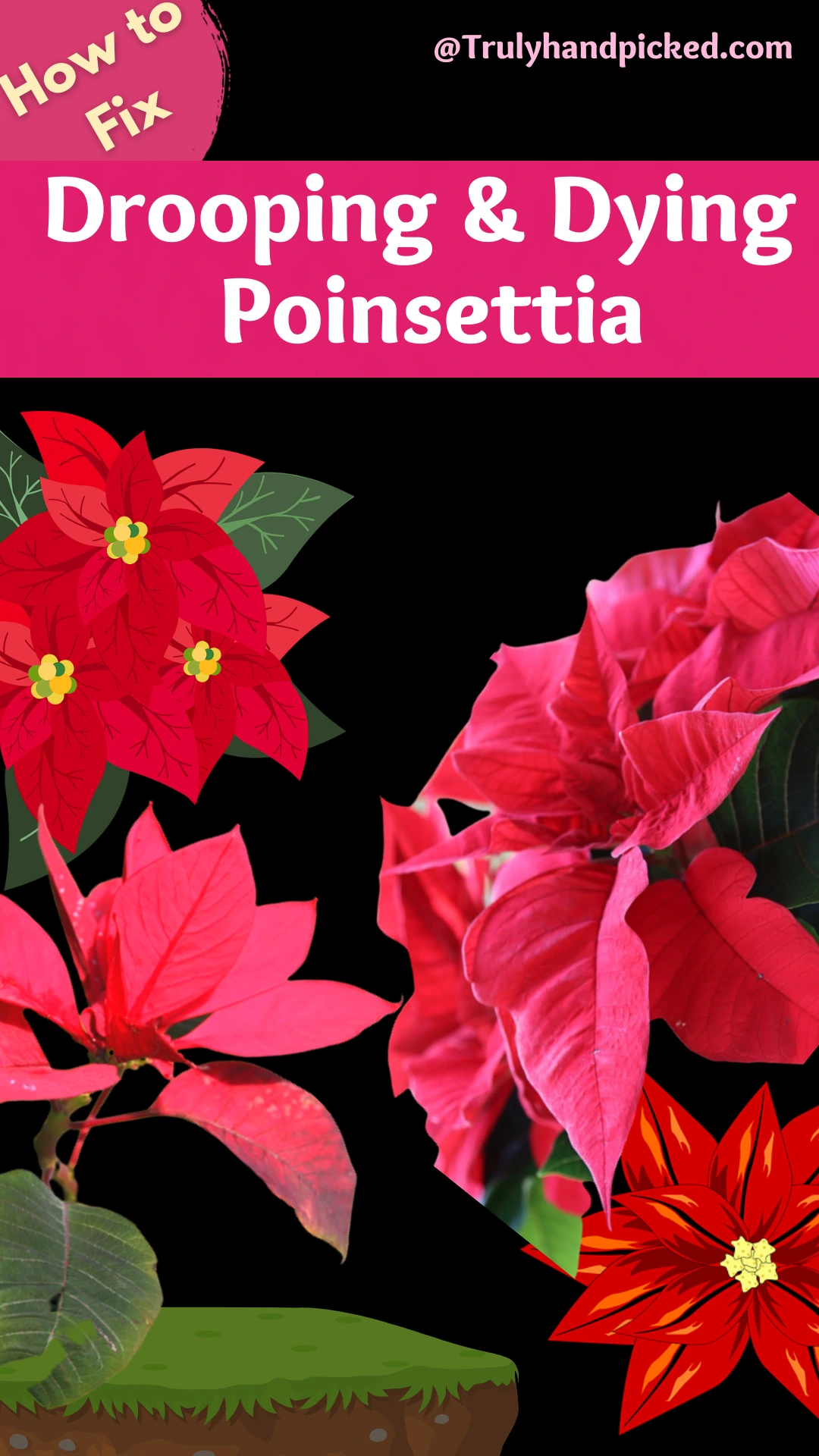Poinsettia is a beautiful-looking flowering plant that symbolizes purity, success, and cheers. This plant can make a great garden plant and houseplant with reasonable care.
Poinsettia has been considered a significant plant since the ancient Aztec culture. Even new-age gardeners love this plant as one of the easy-to-grow flowering plants to cultivate.
No matter whether you have an outdoor yard or an indoor garden area, you can let your poinsettia plant fully thrive with some basic planting essentials.
So, quickly know those elementary caring details from our below-mentioned elaboration-
How to Plant and Care Poinsettia: Quick Overview
Soil: It claims well-drained plain potting soil mixed with a part of peat moss.
Water: Poinsettia needs moderate water to thrive, so, water only the soil turns completely dry.
Sun Exposer: The plant can tolerate full sun exposure or 6-7 hours of direct sunlight daily.
Fertilizer: Any all-purpose fertilizer or homemade organic plant food is rich in nitrogen and potassium.
Hardiness Zones: 9 to 11
Save Dying Poinsettia: Fix Root Rot – Dropping Leaves & Pests
Bright flowers and healthy leaves of poinsettia plants often allure pests and bugs towards them. The sensitive root system also causes fungal infection or root rot sometimes.
Signs and causes
So, you must be attentive to your plant throughout its whole growing session to save a poinsettia plant from its common troubleshoots. Some of the commonest problems poinsettia plants may have, are as follows-
- Gray mold around the stem
- Dropping leaves
- Curvy and discolored leaves
- Rotted roots
- Growth stunted
- Bacterial leaf spot
- Powdery mildew over leaves
- Flowers with faded shades
- Ans scab stems
How to Revive and Prevent Issues
To solve such issues, you need to scrutinize the real cause behind the problem and apply the solution accordingly. Some of the useful solution tips you can apply here are-
- Avoid overwatering/underwatering your plant
- Water your plant only when it is essential (let the surface dry before watering)
- Avoid over-fertilizing your plant
- Place the plant in a spot where it can get enough sunlight every day
- Keep checking for any kind of pest or bugs around your plant
- Prune dying leaves and beyond treatable pest-infested unhealthy parts of your plant instantly
- And transplant your plant when it has outgrown and cant survive in the same planter
Poinsettia Complete Plant Care:
Best Soil and Potting Mix:
Choose loamy type soil that has the well-drained quality to plant your poinsettia plant. It can thrive in neutral to acidic type soil.
You need to keep the soil pH between 5.8 to 6.3 to get the best thriving. Prepare your planting with peat-moss, potting soil, and an all-purpose fertilizer with a ratio of 20-10-20 NPK.
When and How to Often to Water:
Once you plant your poinsettia properly, water the soil thoroughly and wait for the full drain of that water. Poinsettia plants need subtly moist soil but that must not be soggy.
So, make sure that you put your plant in a well-drained planter or garden bed. Now, water your plant only when the top surface of the soil is completely dry only, using a sprayer.
How to Fertilize:
The Poinsettia plant is a medium feeder, thus fertilizing the plant during the plantation by combining it into the potting mix. For further fertilizations, you can try it after every 2 weeks.
Buy any all-purpose fertilizer to feed your plant and use it as the prementioned ratio. You can even keep the phosphorus percent zero in this application if you want. Then, use the fertilizer with a 15-0-15 NPK ratio.
Sunlight Needs and Climate:
Poinsettia plants need full sun to thrive best and to have healthy leaves. To provide your plant full sun exposure or place it in a window where it can get 6-7 hours of direct sunlight a day.
Maintain a temperature between 65 to 75 degrees F throughout the whole growing session of your indoor poinsettia plant. For outdoor poinsettia plants, let them thrive according to nature’s provided climate.
Only make sure, you plant it in a place where it can get direct sunlight for 7 hours a day.
Best Time Prune and How to:
Wait for the time when spring ends, and find out the unhealthy stems or leaves from your poinsettia plant. Now, follow this procedure to prune perfectly-
- Find out the stems, which turn muddy green, and leaves that get discolored
- Bring a plant scissor or shear and cut out those leaves carefully, without hurting the other ones
- To cut the stems, rip off those unhealthy stems about 6-8 inches in length
- To give your plant thrive with more space, prune the new shoots of your growing plants, once the rainy season passes away
- Cut some bushy new shots with a 1-inch length and let your favorite plant grow in proper shape without being over-shaggy.
How to Transplant:
- Prepare a garden bed or a planter with well-drained loose soil balanced with peat moss and a mild amount of fertilizer
- Place the rooted poinsettia plane carefully into the planter or garden bed and secure the top surface with the remaining potting mix
- You need to pat the base of your plant after the replantation and water it thoroughly
- Make sure the water is draining under the soil properly and keep it under direct sunlight for several days
- Provide proper climate, water, and fertilizer to your poinsettia plant once every three weeks
How to Propagate Poinsettia:
You can grow poinsettia from its healthy cuttings. To do so, follow these steps attentively-
- Find out a completely healthy new stem from your plat, that can be ripped easily
- Cut that part out with a sharp object and place the cutting in a pot with water
- Cover the pot with a plastic bag and place it in a warm location, where it can get bright but indirect sunlight
- This way your poinsettia cutting will get proper humidity to thrive again
- After 3-4 weeks your cutting may have a new root system, now take the rooted cutting and plant in a planter prepared with proper potting soil.
Why Grow Poinsettia and What’s Special: Benefits & Funny Things
If you like to see your garden full of vibrantly colorful blossoms then poinsettia will be a great choice indeed.
Different species of poinsettia grow flowers in various bright shades like red, pink, white, and green. However, besides its catchy look, you can get even various other advantages too from this flowering shrub. Such as-
- According to the myths, the poinsettia plant can bring good luck to your life
- A fully thrived poinsettia plant can purify the air of your house when you put it indoor
- The entire plant of poinsettia contains medicinal value along with its sap
- Thus, you can treat plenty of chronic diseases with the medicinal properties of poinsettia
- Fever, infection, ache, vomit problem, nausea, etc. are some issues you can control with poinsettia
- Some extracts of the poinsettia plant also help in increasing breast milk production efficiently
- This plant has fewer toxic elements and thus, it is safe to have inhouse, even if you have kids or pets
- And you can see a unique plant process named photoperiodism by growing this plant in your house. In this process leaves help flowers to get their bright colors gradually during the blooming session!
FAQ: Poinsettia Care
How Often to Water Poinsettia?
Water your poinsettia plant only when the topsoil surface seems completely dry. It should be after every 2 to 3 days subsequently once watered.
Is Poinsettia Poisonous for Cats and Dogs?
Poinsettia plants may react a bit poisonous to your common house pets like cats and dogs. Only ingestion of poinsettia flowers or leaves sometimes can initiate a few mild reactions to your pets.


